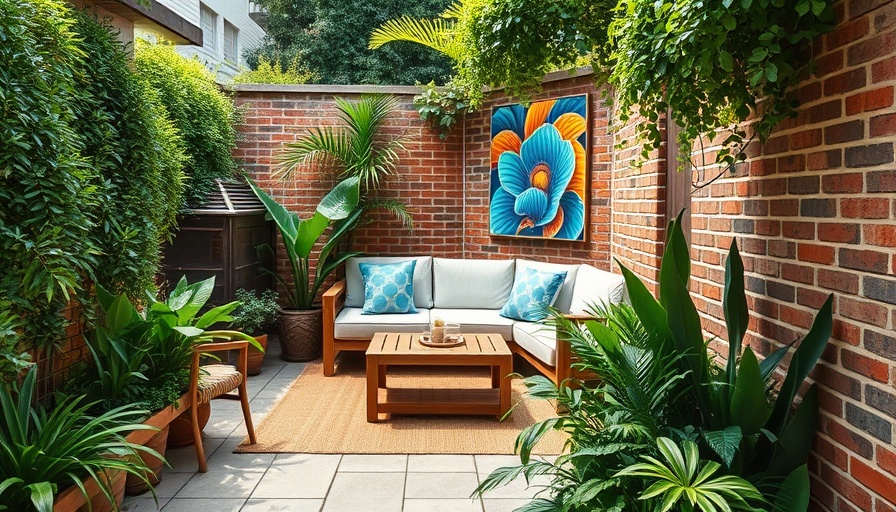
Transforming Small Spaces: The Art of Garden Design
In the journey of creating an inviting outdoor space, even a small backyard can transform into an oasis of serenity, creativity, and functionality. Through thoughtful garden design, homeowners can maximize their outdoor living area without the need for extensive land. This article delves into key ideas and techniques for small garden transformations, inspired by practical design insights shared in the video, Top 5 Small Garden Transformations| Great Home Ideas.
In the video titled Top 5 Small Garden Transformations, we explore effective strategies for designing small outdoor spaces, aiming to inspire readers with practical insights and ideas.
Embracing Nature: Working With Existing Elements
Every garden space comes with unique challenges and advantages. In many cases, the existing elements, like trees, can inform the design choices that homeowners make. For instance, the presence of a large tree in your backyard brings a sculptural quality, but it also casts a shade over the ground, making it challenging to maintain a lush garden. Instead of viewing this as a setback, think of it as an opportunity to incorporate versatile plantings that thrive in indirect lighting.
When planning your design, consider creating under-deck spaces or built-in features that harmonize with nature. Utilize raised beds and planted pots around the tree to conceal roots while offering greenery and visual appeal. Grouping plants with similar watering needs minimizes maintenance and ensures a cohesive look.
Creating Levels and Zones: The Value of Layering
One effective strategy for maximizing a small garden space is to incorporate levels and distinct zones. This not only adds visual interest but also increases the usable area. For example, building varying deck levels can define outdoor entertaining zones, separating lounging areas from cooking spaces, and enhancing the overall flow.
Using modular systems for benches or platforms can save space while providing ample seating for gatherings. In such designs, even the smallest features can deliver major returns, creating an environment that feels open and welcoming rather than cramped.
Choosing the Right Plants: Layering for Effect
The selection of plants can make or break the design of a small garden. Consider using hedging plants to create natural screens that give the illusion of more space and privacy. Opt for vibrant foliage varieties to maintain color all year round without relying heavily on flowering plants. For instance, plants such as Raphaelis, Magnolia Teddy Bear, and assorted ornamental grasses add varied textures and layers without overwhelming the eye.
In addition to aesthetic qualities, choose drought-tolerant and low-maintenance plants suited to your region. This simplification of care contributes to sustainable gardening practices, allowing homeowners more time to enjoy their spaces instead of laboring over them.
Practical Tips for Small Garden Projects
Here are some actionable insights you can apply in your own garden to elevate its aesthetic and functionality:
- Define Your Space: Lay out stepping stones or gravel paths to create clear walking lines that draw the eye outward, making your garden feel larger.
- Incorporate Built-In Features: Utilize built-in benches or tables that do not take up too much visual space and can be designed to blend seamlessly with their surroundings.
- Mix Materials: A combination of decking, gravel, and potted plants softens hard features and invites exploration. Choose mid-tone colors to reflect light and create a brighter atmosphere.
- Focus on Maintenance: Set up an effective watering schedule and composting routine to enhance soil health, which is crucial for the growth of plants in confined areas.
Conclusion– Bringing Your Garden Vision to Life
Through creative design strategies, even the smallest spaces can become vibrant, multi-functional gardens that meet the needs of modern living. Make the most out of your backyard by integrating thoughtful designs, zoned areas, and plantings that bring color and tranquility.
If you find yourself eager to embark on your own garden transformation, explore tutorials and guides or reach out to local community garden initiatives. Gardening is not just about plants; it’s about creating your own unique outdoor sanctuary that you can enjoy season after season.
 Add Row
Add Row  Add
Add 




Write A Comment